
Sometimes it’s a great car that sticks in your mind. Others, it’s the drive itself that is unforgettable.
But back in the mid-’80s, I was lucky enough to score a remarkable drive in a legendary car. And believe me, the memory is as fresh today as it was just hours after piling out of the thing, home safely after about 700 frenetic kilometres.
The road in question was the Alpine run from Canberra, down through Cooma, Adaminaby, Kiandra, Cabramurra, Khancoban, Corryong, across the Kiewa and King Valleys, over the Great Divide passing Powers Lookout, into Mansfield and then back to home base via Yea and Yarra Glen. It remains one of my fave routes.
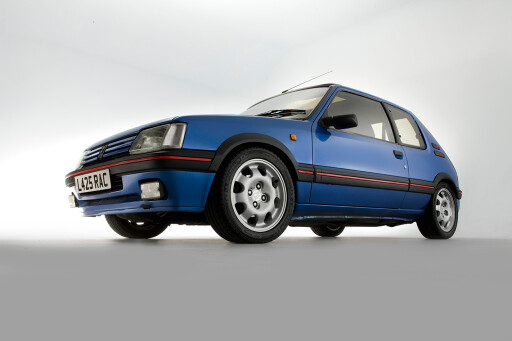 The car, meanwhile, was none other than Peugeot's then-brand-spanking 205 GTI. And, again, this little missile of a thing will always occupy a special place in my blackened heart.
The car, meanwhile, was none other than Peugeot's then-brand-spanking 205 GTI. And, again, this little missile of a thing will always occupy a special place in my blackened heart.
My companion for this madness was an old mate – a farm boy raised on diesel Rodeos and leaf-sprung Falcons – who simply could not believe the stunts this crazy, noisy, yapping little frogmobile was pulling off. He still talks about it today whenever we get together.
While we’re all comfortable with the idea of hot Pug hatches these days, the funny thing is that back in 1987 when the thing landed here, Peugeot was buried in its own ordinariness. The 505 was lacklustre (compared with the excellence of the previous 504, anyway) and even the all-new 405 that was just around the corner promised much, but ultimately, delivered very little.
 So the 205 GTI was, quite naturally, a revelation. But when you strip away the layers, it was nothing too fancy, or even spectacular in its individual bits and pieces.
So the 205 GTI was, quite naturally, a revelation. But when you strip away the layers, it was nothing too fancy, or even spectacular in its individual bits and pieces.
Nope, what made the GTI special was its adherence to a tried and proven formula: a teeny-weeny little car jammed to the gunwales with a huge engine.
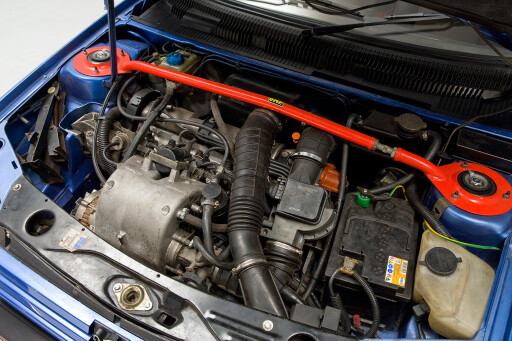 In this case, you’re talking the rather tinny little 205 hatchback body (designed for European parking spaces and fuel prices) crammed into which was the 1.9-litre single camshaft, fuel-injected engine from the forthcoming 405.
In this case, you’re talking the rather tinny little 205 hatchback body (designed for European parking spaces and fuel prices) crammed into which was the 1.9-litre single camshaft, fuel-injected engine from the forthcoming 405.
And you don’t need to be an automotive historian to know that this sort of caper can work; just look at the current hot-hatches and see if the same formula doesn’t still add up.
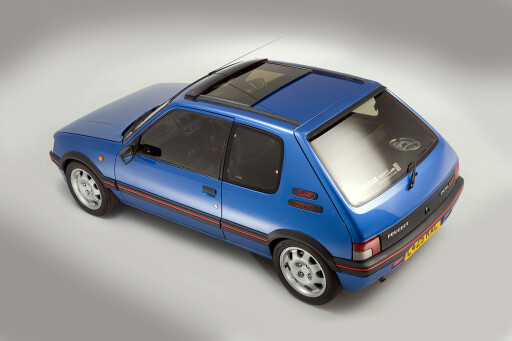 There’s the Golf R, for instance with the engine and most of the tune from the Audi TTS and the Second Gen Focus RS with a 2.5-litre turbo-mill where a 1.8 atmo usually lives. And do I even need to mention that the best AMG around was the smallest car (C-Class) with the biggest lump (the 6.2)?
There’s the Golf R, for instance with the engine and most of the tune from the Audi TTS and the Second Gen Focus RS with a 2.5-litre turbo-mill where a 1.8 atmo usually lives. And do I even need to mention that the best AMG around was the smallest car (C-Class) with the biggest lump (the 6.2)?
In the Peugeot’s case, the engine was anything but high-tech. Single overhead cams, just two valves per cylinder and electronic fuel injection were about as exotic as it got, but the thing was tuned for torque which made it even better at flinging 1000kg or so of hatch down the road.
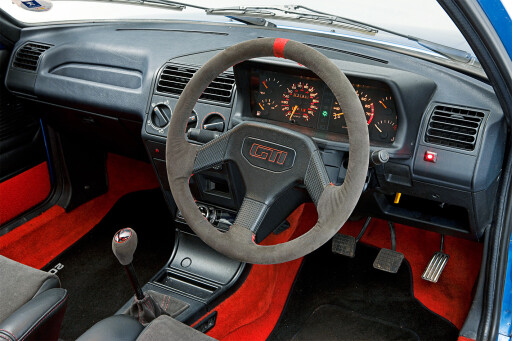 The intake runners were extended to help it grunt although it was only worth 75kW thanks to a de-tune to help it get through the tougher new emissions laws that arrived with unleaded petrol in this market in 1986. (A little aside: it’s thought by many that the press-test cars we journos were let loose in were running ‘dirty’ Euro-spec engines rather than the cleaner 75kW versions sold to punters. Could be, because no customer-car I ever drove went as hard as that first batch of press-test examples).
The intake runners were extended to help it grunt although it was only worth 75kW thanks to a de-tune to help it get through the tougher new emissions laws that arrived with unleaded petrol in this market in 1986. (A little aside: it’s thought by many that the press-test cars we journos were let loose in were running ‘dirty’ Euro-spec engines rather than the cleaner 75kW versions sold to punters. Could be, because no customer-car I ever drove went as hard as that first batch of press-test examples).
But even the customer version of the GTI went pretty well and handled like no other small car you could buy at any money. At a time when manufacturers were still getting the hang of making engines work on unleaded and handling wasn’t a word you saw in small-car brochures, the 205 just kept those jaws a-dropping.
 The five-speed manual gearbox was a treat (although the shifter looked gangly and felt plasticky) and the ratios were short enough to keep the thing on the boil even if you got a bit lazy with the clutch pedal. Yes, it would understeer if you barged into a corner too quickly, but play it smart and the GTI soon emerged as one of the most balanced and playful front-drive chassis around.
The five-speed manual gearbox was a treat (although the shifter looked gangly and felt plasticky) and the ratios were short enough to keep the thing on the boil even if you got a bit lazy with the clutch pedal. Yes, it would understeer if you barged into a corner too quickly, but play it smart and the GTI soon emerged as one of the most balanced and playful front-drive chassis around.
Okay, the ride wasn’t exactly world-beating and the short wheelbase meant it could get a bit medieval on yo’ ass if you got stupid with it, but as a means of covering big distances on gnarly roads with a stooped grin on yer face, the GTI was unbeatable.
A later batch of cars arrived in 1991 and these, while being pretty much the same animal, were a better thing. For a start, you now had access to 90kW of power hanks to a retune of essentially the same motor, but the facelift also fixed the car’s biggest oversight which had afflicted it from day one.
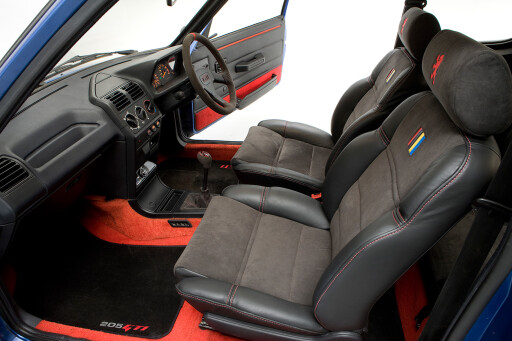 Seems in the original conversion from left to right-hand-drive, the engineers responsible were having a bad day. They either couldn’t (or couldn’t be bothered to) figure out a way to package both power-steering and air-conditioning into the 205’s engine bay.
Seems in the original conversion from left to right-hand-drive, the engineers responsible were having a bad day. They either couldn’t (or couldn’t be bothered to) figure out a way to package both power-steering and air-conditioning into the 205’s engine bay.
The Peugeot importer of the day (and it’s not the same mob as today) was faced with the dilemma of having either a car that would cook its passengers in summer or one that needed a ’roid monkey to steer it. History records that they opted for air-con, perhaps reasoning that a few weeks behind the wheel would build the necessary muscles in most owners.
Anyway, like I said, the updated version fixed that by combining power-hook with air-con (although it was never the Arctic variety in the first place) so they’re the cars that are worth looking for now.
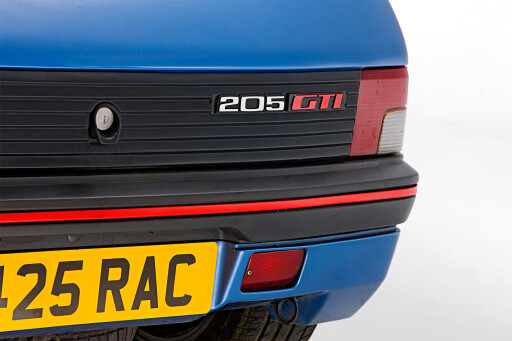 But that’s not the only reason to shop for a later model car (they were imported and sold right up to 1994). Nope, see, the later the car, the better the build quality was likely to be and the fewer kilometres it’s likely to have travelled. That lightweight construction might have been great in power-to-weight terms, but it wasn’t so brilliant after a few years on Aussie roads.
But that’s not the only reason to shop for a later model car (they were imported and sold right up to 1994). Nope, see, the later the car, the better the build quality was likely to be and the fewer kilometres it’s likely to have travelled. That lightweight construction might have been great in power-to-weight terms, but it wasn’t so brilliant after a few years on Aussie roads.
Chances are any 205 GTI will have creaking doors and hatch (the metal frames squawk on the sealing rubbers) and you might find cracks in the body joins (check for reapplied joint sealant) or even stress cracks in otherwise important parts of the monocoque.
 It’s also true that the basic 205 was designed to be touch-parked in Paris for a few years before being dumped somewhere (probably a Pacific atoll somewhere). So, the things are simply a bit underdone in the longevity department. The paint could easily be dull or flaky by now, the interior trim is a good chance to be faded or ripped and the plastics will almost certainly be chalky and cracked.
It’s also true that the basic 205 was designed to be touch-parked in Paris for a few years before being dumped somewhere (probably a Pacific atoll somewhere). So, the things are simply a bit underdone in the longevity department. The paint could easily be dull or flaky by now, the interior trim is a good chance to be faded or ripped and the plastics will almost certainly be chalky and cracked.
Check underneath, too, because brakes didn’t last long on hard-driven examples and driveshafts don’t last either. The engine will probably be leaking oil and the gearbox could have very little synchromesh left on its lower gears. A clutch that shudders is either worn out or pointing to a flywheel with hot spots that will need machining to fix them.
You’ll also probably find during your first Saturday-morning once-over that the 205 GTI likes a drop of lubricant. Early engines had horrendous oil-burning problems, but the bulk of these were fixed under warranty. The rest will have died by now anyway. But even a ‘good’ one will use a little oil between services and the smart owner keeps a watchful eye on the dipstick week to week.
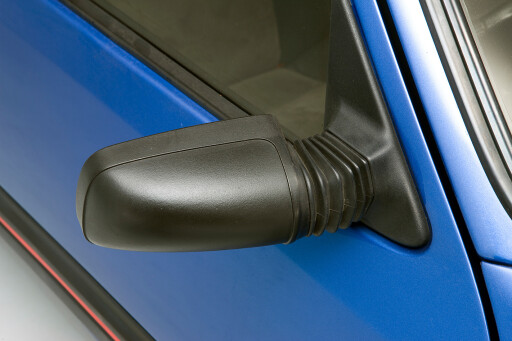 But here’s the bottom line: just like the original Cooper S and the Mark 1 Golf GTI, the Peugeot 205 GTI is destined to become regarded as a seminal hot hatch. Drive one today and you’re cruising on Cred Street; find one in showroom nick and keep it that way for another few years and you could even have quite an investment on your hands.
But here’s the bottom line: just like the original Cooper S and the Mark 1 Golf GTI, the Peugeot 205 GTI is destined to become regarded as a seminal hot hatch. Drive one today and you’re cruising on Cred Street; find one in showroom nick and keep it that way for another few years and you could even have quite an investment on your hands.
It really is a shame that Peugeot doesn’t make anything like the 205 GTI these days. In fact, apart from a rare couple of hot-rodded 306s in the mid-’90s, the company hasn’t even come close to matching the 205 for coolness and charm in the years that have followed. And that doesn’t look like changing soon which only makes the original the absolute best.
Pros
• Enough performance to see off many allegedly sportier cars
• Great handling
• Funky looks
• Oodles of cred
Cons
• Early cars had air-con, but no power steering
• Most still around are dungers that have lived hard lives. Truly solid ones are rare
• Oil burning is a fact of life
• Mechanically lacking in a few areas

COMMENTS